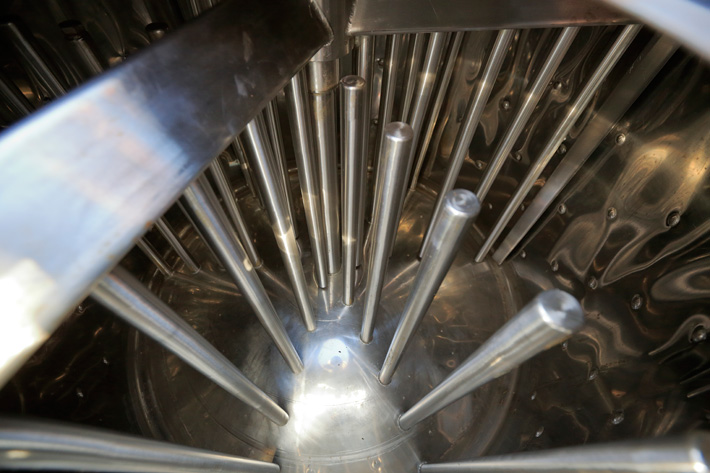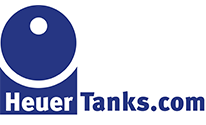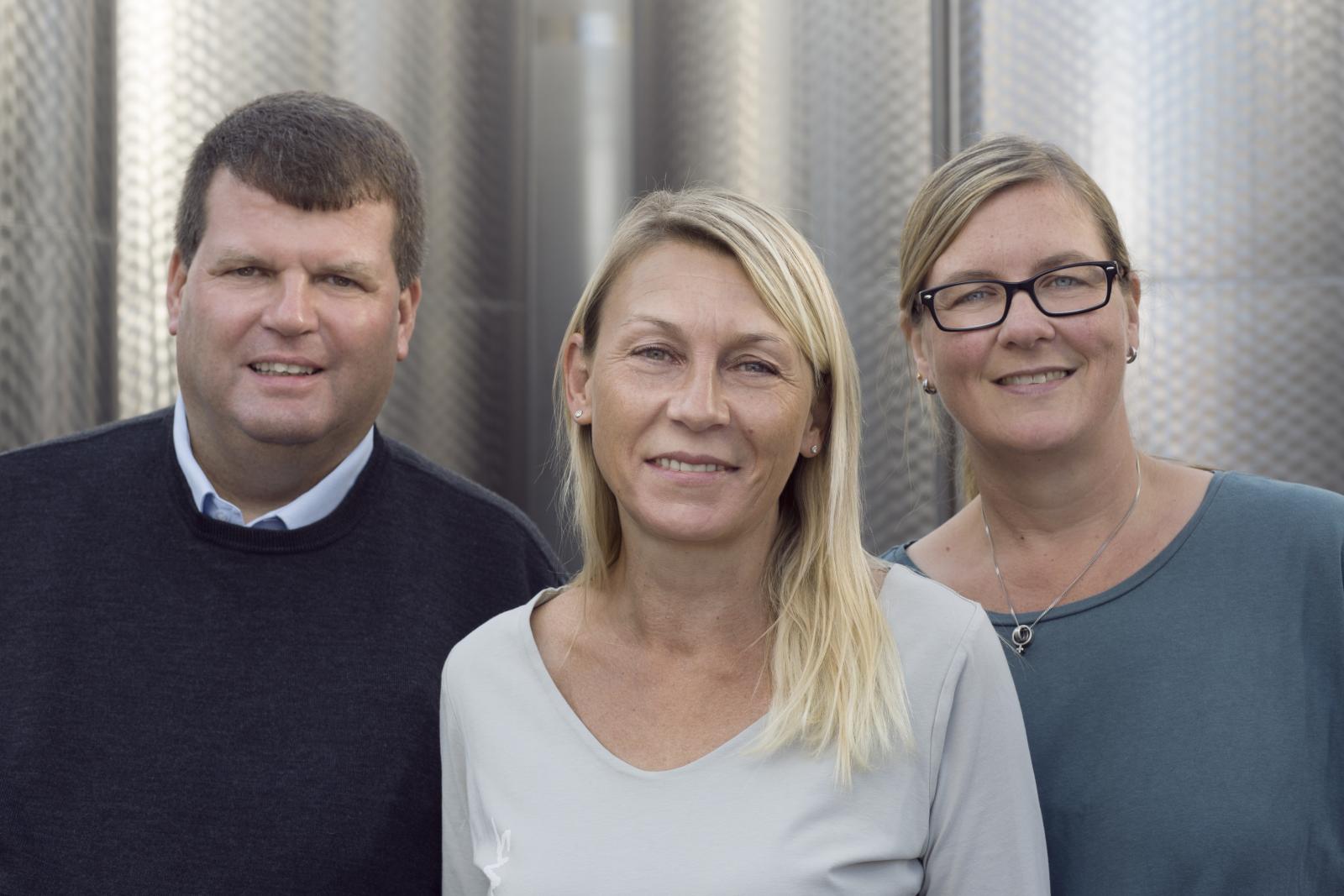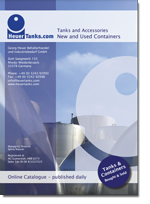FAQ – Frequently Asked Questions about Tanks and Containers.
Tank or Container? Which term is correct?
“Storage tanks are containers that hold liquids, compressed gases or mediums used for the short- or long-term storage of heat or cold.” According to Wikipedia. In a way, both are correct, but not necessarily specific enough. Commonly when thinking of tanks, people refer to fuel tanks for vehicles or even armored vehicles. For containers, people often think of shipping containers or even Tupperware.
These acronyms describe two variants of stainless steel. V2A (material number 1.4301) and V4A (1.4571) belong to the group of corrosion- and acid-resistant steel types. V2A is not suitable for media containing chlorine, unlike V4A (due to its 2% molybdenum content). V2A is often used in the food industry, while V4A is used more in the production of pharmaceutical and chemical products.
Tanks and containers have a multitude of uses in the fields of chemical and food production as well as general storage. They are utilized for the storage of various types of liquids including non-toxic substances like water, toxic materials such as acids and alkalis, flammable liquids like oils and fuels, and liquefied gases like propane and butane. In addition to storage, they are commonly utilized in production processes for mixing, cooking, and as cooling or heating vessels. Tanks are an essential component for storing raw materials, semi-finished products, and finished products in a multitude of industries.
The type of certification required depends on your local and national jurisdiction. Most commonly certification is required when storing hazardous or flammable material, but please make sure you check with your local authorities.
Every jurisdiction has their own regiment for certification, recertification and the types of tanks that applies to. Please bear in mind that often regulation is tied to the size of the container and the materials stored in them, so please ensure you include that in your inquiry to local authorities.
The legal requirements for correctly installing a container should be determined by your engineer, as they should be aware of all applicable regulation. The best practice for installing a tank or container includes that you verify the resistance of the assembly against temperature as well as mechanical and chemical influences. It needs to be fixed on solid foundations and immobilized to ensure that it remains airtight. Cladding to prevent collision with vehicles or pallet trucks is often recommended.
If water-hazardous substances are stored in a tank or container, a collection tray is only required is that container does not have a double-shell. Otherwise, escaping substances must be able to be retained. The collection volume of the storage tank must correspond to the maximum amount that can be released in the event of a malfunction. For possible exceptions and further legal obligations regarding collection trays and hazard prevention, please refer to your local jurisdiction.
Tanks, as we offer them, are expensive to manufacture: the material, mostly stainless steel, is expensive, planning, construction, and production require significant personnel resources. Additionally, high-quality tanks are just as functional after many years as they were on the first day. Moreover, the cost savings from using used tanks helps make new plants more affordable. This is precisely why many plant builders first look for a used tank before commissioning a new one. The fact that the existing tank can be inspected, purchased and integrated with minimal delays adds additional benefits to help with what is often a very complex construction project in its own right.
Depending on the size and weight of the tank, multiple transport solutions can be offered, which would be priced individually. This also includes possible insurance fees and pricing for transport based on distance. Therefore, all transport costs are quoted individually based on your location and requirements.
Unless you prefer to pick up the tank yourself, we will take care of the entire transportation process. We will hire one of several trusted freight forwarders, obtain the necessary transportation permit (if required), and coordinate with you on a delivery date and unloading.
Within Germany, a variety of transport permits will be provided where needed as part of the delivery arrangements. Outside of Germany we will be working with our logistics partners to obtain any necessary permits that would be needed along the route to your facilities.
Yes, up to the point where a tank is unloaded on your premises, we bear the risk of any damage. In the event of such an occurrence - fortunately, this is rare - we will work together to determine whether repair is necessary and reasonable. However, we cannot be held liable for any production losses resulting from a damaged tank preventing timely assembly.
Our experience shows that customers go where they can find the tank they are looking for. That being said, where there are multiple tanks available for the same purpose, the decision on where to make your purchase is often based not just on price but the available financial and logistic services.
While we don’t have exact numbers, we consider ourselves to be among the “Big Five”. Those we consider to be the five largest vendors that routinely have in excess of 1000 tanks in stock. Four of those are found in Germany, one in Belgium. The concentration in Germany also has a lot to do with the strong plant engineering industry in this country.
In all branches of manufacturing industry, plants are regularly renewed - old ones removed, new ones installed. Often, the old equipment has to make way for the new. Since the reuse value of, for example, stainless steel tanks is significantly higher than the material value, they are not scrapped but resold through vendors such as ourselves. They make their bids by phone or on-site. If they are awarded the contract, they often have to dismantle and transport the containers.
No, well, sort of. Each customer can expect a precise description of each individual tank and assume that the condition in the description corresponds exactly to the actual product. It cannot be ruled out that leaks may arise during reconstruction that were not previously detectable. Good vendors offer a crack test in advance, usually for an additional fee.
There are two reasons for this. On the one hand, they can be stored outside because the materials are usually of such high quality that they do not corrode. On the other hand, they must be stored outside because they would require an incredibly large storage area under cover. This would significantly impact prices of used tanks.
Discounts can only be given by those who have previously added unnecessary surcharges. We believe that we should offer tanks at exactly the value they should be to keep the process transparent for our customers. Tanks are not something that a plant engineer likes to buy just because they are on sale.
It depends on how you look at it. There are always some that sell faster than expected. And then there are others that wait for a buyer for years. Then there are times when specific tank sizes or features are in high demand. But this varies greatly and also has to do with whether certain production processes need to be adapted to new regulations or laws, for example.
Sometimes a new tank is cheaper because the distance and therefore the transportation costs or the necessary conversion effort of a used tank are too high.
Certainly. We help with loading and securing your cargo. And we ask in advance whether the choice of truck meets the requirements of the transport volume. However, from experience, we can say that it is often more sensible to have a used tank delivered. Because then the risks of transportation and loading are not borne by you as the buyer, but by the contractor.
Yes, but this is very rare. This is partly due to the fact that private individuals are not allowed to store dangerous liquids in large quantities. And for harmless things like collecting rainwater, there are cheaper solutions than high-volume industrial tanks.
There are several points here. Firstly, one has to mention our high level of recognition and decades of experience. Secondly, our strong dedication to service. We convert tanks in our own workshop and even help with our own teams to remove tanks from plants or to insert them at their new location. Not everyone in our industry can do this as well as we can.







